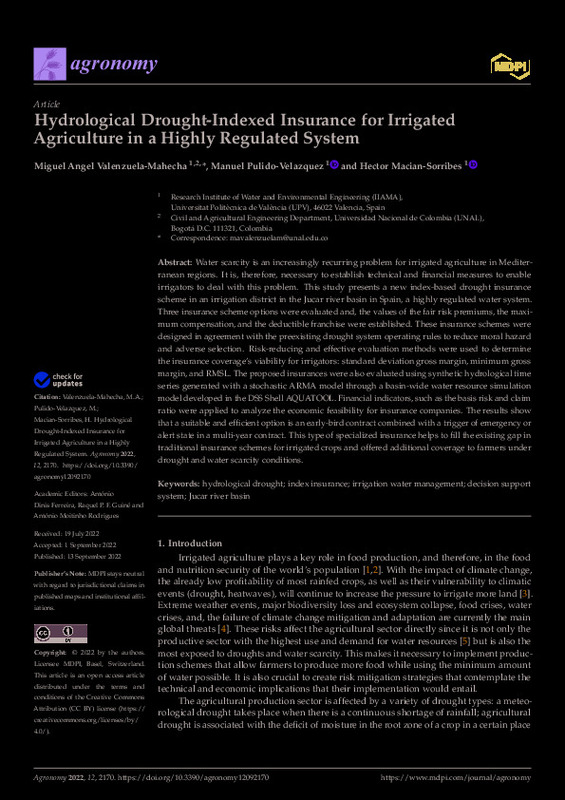JavaScript is disabled for your browser. Some features of this site may not work without it.
Buscar en RiuNet
Listar
Mi cuenta
Estadísticas
Ayuda RiuNet
Admin. UPV
Hydrological Drought-Indexed Insurance for Irrigated Agriculture in a Highly Regulated System
Mostrar el registro completo del ítem
Valenzuela-Mahecha, MA.; Pulido-Velazquez, M.; Macian-Sorribes, H. (2022). Hydrological Drought-Indexed Insurance for Irrigated Agriculture in a Highly Regulated System. Agronomy. 12(9):1-17. https://doi.org/10.3390/agronomy12092170
Por favor, use este identificador para citar o enlazar este ítem: http://hdl.handle.net/10251/192502
Ficheros en el ítem
Metadatos del ítem
| Título: | Hydrological Drought-Indexed Insurance for Irrigated Agriculture in a Highly Regulated System | |
| Autor: | Valenzuela-Mahecha, Miguel Angel | |
| Entidad UPV: |
|
|
| Fecha difusión: |
|
|
| Resumen: |
[EN] Water scarcity is an increasingly recurring problem for irrigated agriculture in Mediterranean regions. It is, therefore, necessary to establish technical and financial measures to enable irrigators to deal with this ...[+]
|
|
| Palabras clave: |
|
|
| Derechos de uso: | Reconocimiento (by) | |
| Fuente: |
|
|
| DOI: |
|
|
| Editorial: |
|
|
| Versión del editor: | https://doi.org/10.3390/agronomy12092170 | |
| Código del Proyecto: |
|
|
| Agradecimientos: |
This research and the APC were funded by Universidad Nacional de Colombia and the
doctoral student training program of Ministry of Science, Technology, and Innovation of Colombia
(MinCiencias). It has also received funding ...[+]
|
|
| Tipo: |
|









